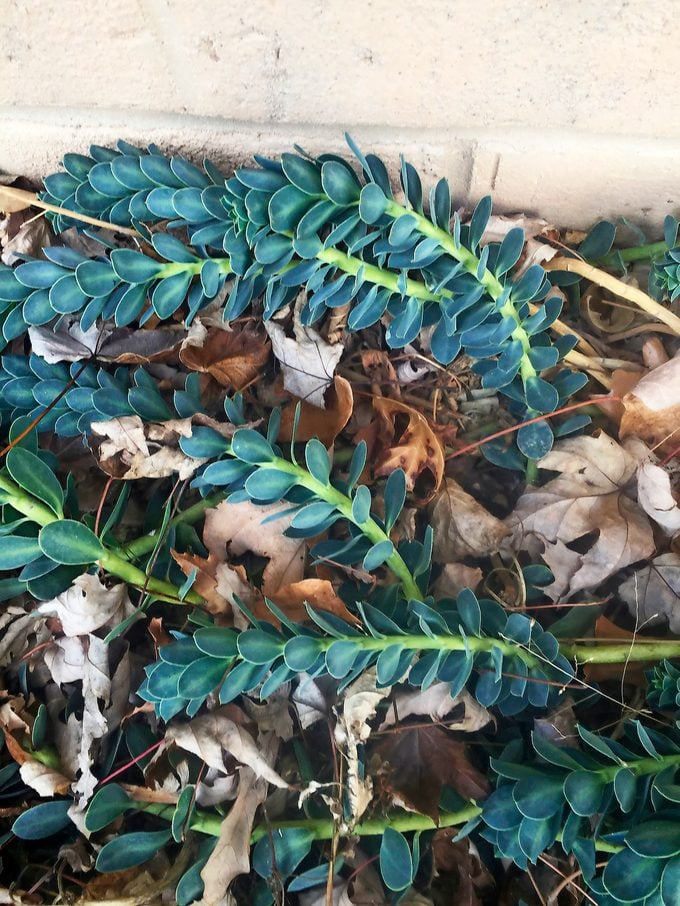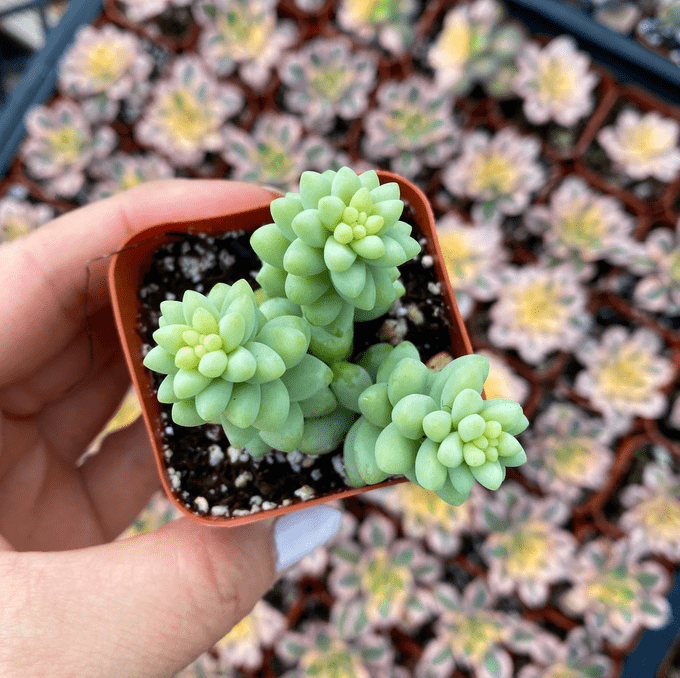Is a Donkey Tail Succulent Invasive?
Updated: Jul. 12, 2022
A donkey tail succulent is adorable, with rows of bright green leaves. But is it invasive? Hint—make sure you are getting the right plant!
Our editors and experts handpick every product we feature. We may earn a commission from your purchases.
Is a Donkey Tail Succulent Invasive?

Q: I found this plant in late December in Wisconsin and it was still green. What is it? asks Birds & Blooms Reader Michael King.
Garden expert Melinda Myers writes, “Depending on the region, some gardeners prize this plant and others avoid it for its invasiveness. Known as donkey tail or myrtle spurge (Euphorbia myrsinites), the succulent is banned in several western states because it spreads quickly, crowding out native plants.”
Hardy in Zones 4 to 8, it thrives in heat, full sun and well-draining soil. Yellow star-shaped flowers appear on the tips of the branches and are surrounded by a yellow-green or green bract. It reseeds readily and can quickly take over a garden. Remove the fading flowers to prevent seeds from forming.
Learn how to propagate succulents (for more free plants!)
Choose This Donkey’s Tail Succulent Instead

You might be surprised to learn that more than one plant is known by the common name donkey tail. The more common succulent, Sedum morganianum, also known as burro’s tail, will thrive year-round when grown indoors. Make sure you check the botanical name to ensure you are getting the correct plant! Keep in mind that this succulent doesn’t usually bloom as a houseplant.
If you’re looking to add this sedum to an outdoor succulent garden, the best time to plant it is in early spring or when temperatures are consistently above 40 degrees Fahrenheit. It won’t typically survive a winter outdoors in cold climates, though, so you’ll have to overwinter it inside. This plant will not spread or take over like myrtle spurge.
Like many succulents, donkey’s tail can be finicky about how much water it receives, so it’s best not to give it too much. Plant it in sandy soil (or cactus soil) in a pot or planter that allows excess water to drain. Place your plant in direct sunlight. Donkey’s tail drops its too-cute leaves easily, so it’s best to set it somewhere where it won’t be disturbed.
Next, learn how to grow Autumn Fire sedum for late season color.




















